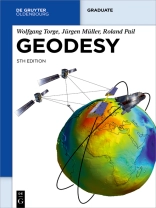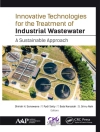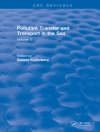The fifth edition of this textbook has been completely revised and significantly extended in order to reflect the revolution of geodetic technologies, methods and applications during the last decade. The Global Geodetic Observing System established by the IAG utilizes a variety of techniques to determine the geometric shape of the earth and its kinematics, the variations of earth rotation, and the earth’s gravity field. The societal importance of geodetic products was highlighted by the UN resolution on the Global Geodetic Reference Frame. In this context, both space and terrestrial techniques play a fundamental role. Recent space missions are monitoring climate-relevant processes such as mass transport in the Earth system and sea level changes. The analysis of the time variation of the geodetic products provides the link to neighboring geosciences and contributes to proper modelling of geodynamic processes. New satellite mission concepts and novel technologies such as quantum gravimetry and optical clocks show great potential to further improve the geodetic observing system in the future. The book especially addresses graduate students in the fields of geodesy, geophysics, surveying engineering, geomatics, and space navigation. It should also serve as a reference for geoscientists and engineers facing geodetic problems in their professional work. The book follows the principal directions of geodesy, providing the theoretical background as well as the principles of measurement and evaluation methods, which is enriched with numerous figures. An extensive reference list supports further studies.
Circa l’autore
__Wolfgang Torge was born 1931 in Laubusch, Lower Silesia, Germany. In 1968 he was appointed full professor for geodesy at the (now) Leibniz University in Hannover, Germany. In the following thirty years he built up the Institute of Geodesy (Institut für Erdmessung), concentrating on three-dimensional geodesy, gravimetry and gravity field modeling including gravity variations with time. International and partly long-term research projects concentrated on Iceland, South America and China. His booklet ‘Geodäsie’ (De Gruyter, 1975) was well accepted, followed by a textbook and since 1980 by five editions of the graduate textbook ‘Geodesy’, now with the co-authors Jürgen Müller and Roland Pail. The monographs on ‘Gravimetry’ (1989) and ‘Geschichte der Geodäsie in Deutschland’ (2007/2009) indicate special areas of Torge´s interest.
Among Torge’s manifold activities in national and international cooperation and management we have his 32 years lasting chief-editorship of the Zeitschrift für Vermessungswesen (recognized by the Helmert-medal in gold), the chairmanship of the National Committee of Geodesy and Geophysics and the presidency of the International Association of Geodesy (1991-1995).
__Jürgen Müller is full Professor in Physical Geodesy at the Leibniz Universität Hannover, Germany, since 2001. He studied Geodesy at the Technical University of Munich where he also finished his doctoral degree in 1991 ‘with excellence’ and his habilitation in 2001. His main research fields cover gravity field satellite missions, terrestrial gravimetry, including novel measurement concepts, related earth system research, lunar laser ranging and general relativity.
In the past years, he focused his research on elaborating the potential benefit of quantum technologies for geodetic applications. Examples are quantum accelerometers/gravimeters for ground and space use as well as optical clock networks for novel height systems and monitoring of mass variations. This research has been carried out in large collaboration programs together with physicists like the DFG CRC 1464 Terra Q of which Jürgen Müller is the speaker. This new research field has also been pushed by the International Association of Geodesy (IAG) by establishing the major project Novel Sensors and Quantum Technology for Geodesy (Qu Ge) with Jürgen Müller as its chair.
__Roland Pail is full professor for Astronomical and Physical Geodesy at Technical University of Munich (TUM), Germany, since 2010. He studied geophysics at the University of Vienna, and received his doctorate in engineering sciences (sub auspiciis praesidentis) from TU Graz in 1999. Subsequently he was an assistant professor at TU Graz until 2009, where he received his habilitation in ‘theoretical geodesy’ in 2002. His research activities focus on physical and numerical geodesy with the main emphasis on the global and regional modeling of the Earth’s gravity field and its temporal changes, playing an important role in the definition of height systems and making significant contributions to the monitoring of climate-relevant mass transport processes, such as ocean circulation, sea level rise, ice mass melting, global water cycle.
He was principal investigator of the ESA gravity mission GOCE and has been leading several national and international research projects. He is spokesman of the Research Training Group UPLIFT dealing with the modelling of geophysical vertical motion processes. He is currently working on the development, design and numerical simulation of future gravity mission concepts, and is leading an ESA science study on the realization of the satellite constellation mission MAGIC. Together with Jürgen Müller, he is investigation novel technologies such as quantum sensors for gravimetry.












